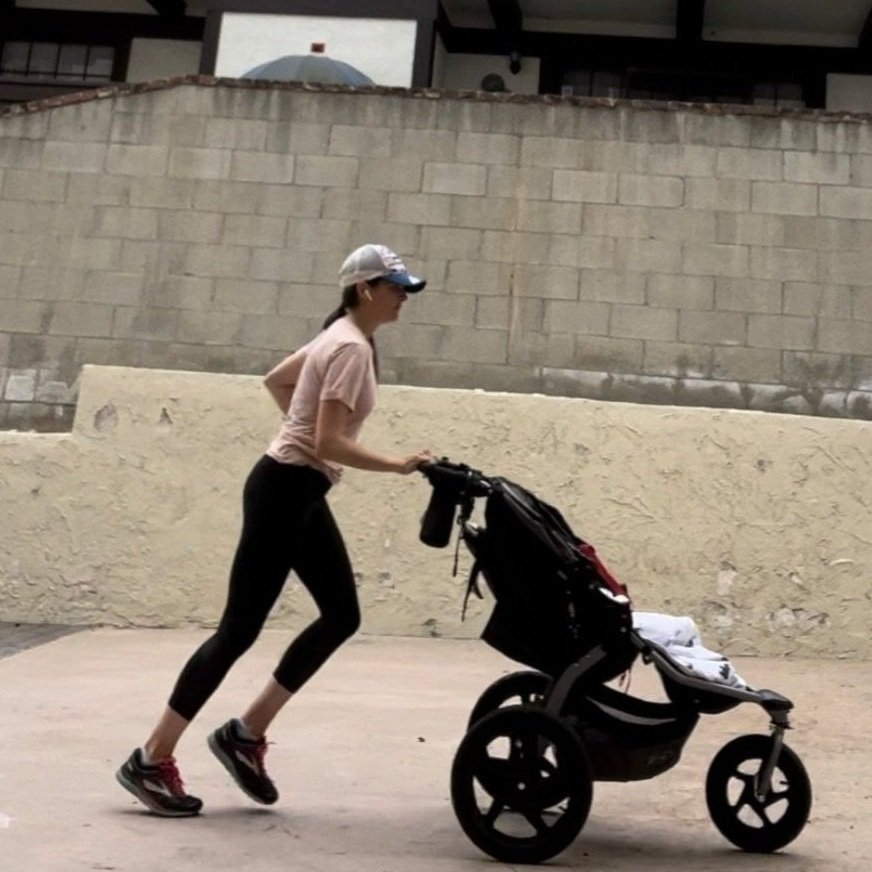Mastering Stroller Running: A Comprehensive Guide for New Moms
Introduction
Staying active after welcoming a baby is a goal for many new moms, and stroller running provides an excellent opportunity to combine fitness with spending quality time with your little one. However, stroller running comes with its own set of considerations, both for your baby's safety and your postpartum health. In this guide, we'll dive into the essentials of stroller running, including when it's safe for both baby and mom, as well as important biomechanical aspects to optimize your health and form.
When is it Safe for Baby?
Before hitting the pavement with your stroller, it's crucial to ensure that your baby is developmentally ready. Pediatricians generally recommend waiting until your baby has strong neck control, usually around six to eight months of age. This ensures that your baby can comfortably support their head during the motion of running. Additionally, make sure your stroller is equipped with a secure and adjustable harness to keep your baby safe and snug.
When is it Safe for Postpartum Moms?
Postpartum moms should prioritize their own recovery before embarking on stroller running. Generally, it's advisable to wait until you've received clearance from your healthcare provider, usually around six weeks postpartum for a vaginal birth and eight to ten weeks for a cesarean section. Most pelvic floor therapists (myself included) recommend waiting closer to 10-12 weeks before initiating a running program, and this is what I recommend as well. This is to allow adequate tissue healing time to the core and pelvic floor. Do keep in mind that the body is healing & shifting for up to 1-2 years postpartum. Listening to your body and gradually easing back into exercise is key to avoiding injury and supporting your recovery.
Biomechanics of Stroller Running: Form and Health Optimization
Now here is the meat & potatoes of this post. Stroller running introduces unique biomechanical challenges and adjustments that both new and experienced runners should be aware of:
1. Anterior Body Engagement: Stroller running engages the anterior body more than traditional running, requiring increased core & hip flexor strength, and stabilization.
2. Ground Contact Time: With the stroller's added resistance, ground contact time increases, meaning your foot generally stays on the ground longer than it did before without pushing a stroller. This means we may want to emphasize strength over endurance when it comes to exercises to support running. I do recommend many of my clients to think “quick and light feet” when running with and without a stroller to optimize the ground contact time.
3. Stride Length: Expect a slightly shorter stride length with a stroller, requiring a more compact and controlled running form. You can run behind or to the side of the stroller pushing with ideally one arm. If you are kicking the stroller, then your stride length is likely too long. We want our foot to land underneath our trunk for efficient running form.
4. Biomechanical Changes: Research on stroller running is limited, but observed biomechanical changes include increased anterior pelvic tilt, decreased hip extension, and increased knee flexion, An increased forward trunk lean is very beneficial for running posture for a multitude of reasons including decrease downward pressure onto the pelvic floor, and minimizing some of these biomechanical changes listed.
5. Trunk Rotation and Breathing: Stroller running may lead to decreased trunk rotation and shallower chest breathing due to the strollers presence. I recommend using a one-arm push, or the push and catch technique whenever possible since this will allow for a more natural running form including trunk rotation. When we are able to rotate through our trunk, we disperse pressure more evenly throughout or core system and we can take deeper breaths. Try a breath pattern in through the nose & out through the nose & mouth to get a deeper & more effective breath.
6. Hills and Strap Use: Uphill runs require two-handed stroller pushing for stability. Use the strap on bar to maintain a consistent push rhythm and bar height at 90 degrees for optimal arm positioning.
7. Adapt and Modify: Embrace the stroller as an added challenge to your running routine. Use it to improve both endurance and strength, knowing that running with a stroller carries unique benefits and considerations.
Conclusion:
Stroller running is a fantastic way for new moms to stay active while bonding with their baby. Ensuring the safety of your baby and prioritizing your own postpartum recovery are fundamental before embarking on this fitness journey. Understanding the biomechanical nuances of stroller running, including form adjustments and potential health implications, allows you to optimize your experience while reaping the benefits of this unique form of exercise. Remember, as with any physical activity, always listen to your body, be patient, and enjoy the journey of stroller running with your little one.
